6 STEPS OF ASSESSMENT: DO I HAVE A TONGUE TIE? Written By: Dr. Ankita Shah, 1 October 2023

NORMAL TONGUE RESTING POSTURE
NORMAL/OPTIMAL
WIDE OPEN AIRWAY
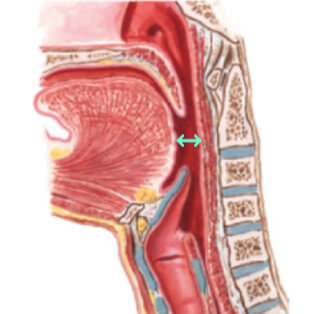
LOW TONGUE POSTURE
TONGUE BLOCKING AIRWAY
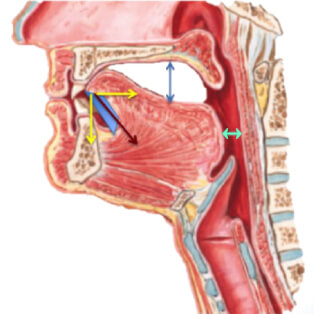
The back of the tongue should be resting high up on the palate. This helps in keeping the airway wide open. If the tongue is resting low it, the posterior part of the tongue falls back and can narrow the airway, contributing to mouth breathing, noisy breathing, snoring or blocking the airway completely causing sleep apnea
A tongue tie assessment remains incomplete if only the length of the tongue and in and out movement of tongue is considered. A tongue tie assessment must also consider the entire mobility of tongue in and up and down direction. A TRMR scale (i.e Tongue Range of Motion Ratio) which was developed by Dr. Soroush Zaghi, a world renowned Sleep Surgeon and Dr. Audrey Yoon who is a renowned sleep orthodontist is being used globally to assess tongue mobility.
Here are some quick steps of assessment:
1) Open your mouth comfortably wide.
2) Let your tongue tip rest right behind your teeth(i.e Spot).
3) Measure the ratio of mouth opening when tongue tip is on the spot to the measurement of mouth when it’s comfortably wide open.
4) Suck the entire tongue up and measure the mouth opening.
5) Measure the ratio of the mouth opening when the tongue is sucked up to the measurement of the mouth when it’s comfortably wide open.
6) Make a note of any additional strain or compensations in the neck, shoulder, jaw or floor of mouth muscles, teeth grinding, speech or swallowing.
Want to know if you have a tongue tie? Follow our 6-step assessment to determine if you have a tongue tie.Schedule a consultation with our experienced team to discuss your options and improve your quality of life.
FUNCTIONAL CLASSIFICATION OF ANKYLOGLOSSIA BASED ON TONGUE RANGE MOTION RATIO (TRMR)
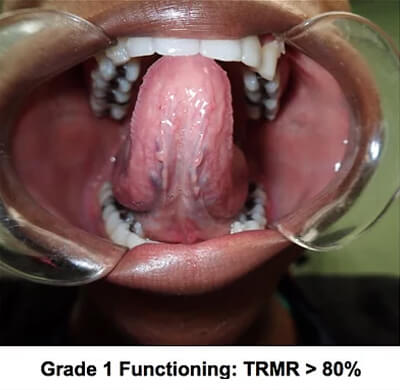
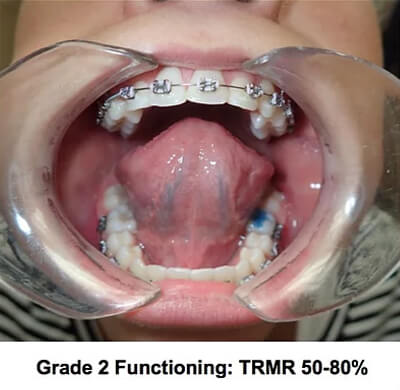
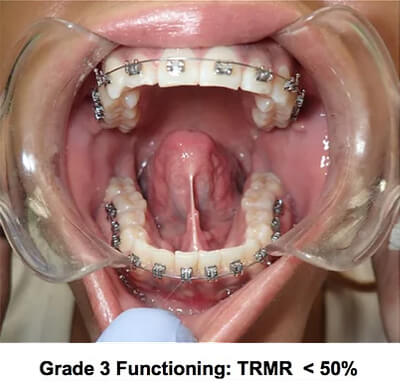
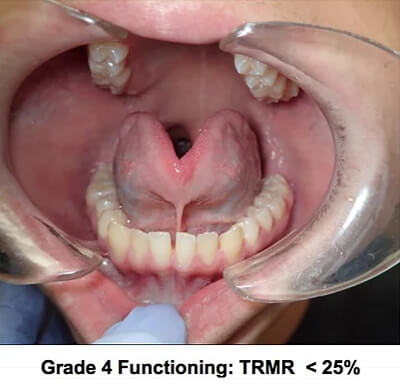
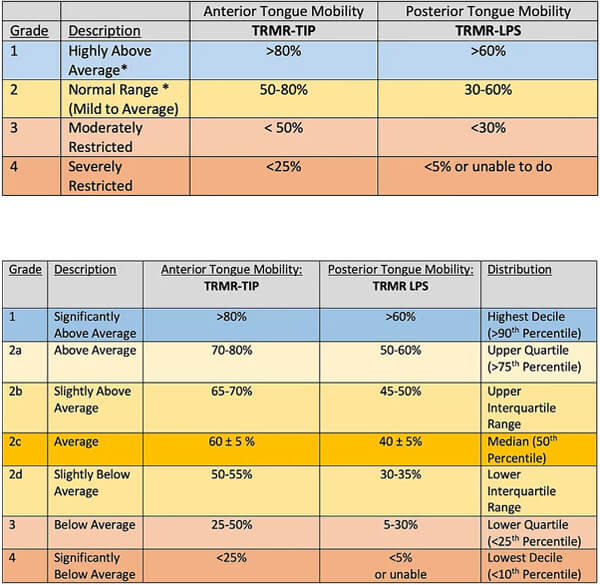
If the tongue can reach only upto 5-50% of the mouth opening, it is considered severely restricted. If the patient cannot reach the back of the tongue more than 30% then also it is considered restricted. A thorough look at compensations needs to be taken into account to decide whether the tongue tie needs a release or not.
Want to know if you have a tongue tie? Follow our 6-step assessment to determine if you have a tongue tie.Schedule a consultation with our experienced team to discuss your options and improve your quality of life.
RESEARCH
Recent research has shown that restricted tongue mobility can affect growth of jaws. It also narrows the upper jaw and elongates the soft palate that can result in Sleep Disordered Breathing. Myofunctional Therapy, Lingual Frenuloplasty and Orthodontic treatment play a critical role in the treatment of sleep disordered breathing.
1) Soroush Zaghi, Sanda Valcu‐Pinkerton, Mia Jabara, Leyli Norouz‐Knutsen, Chirag Govardhan, Joy Moeller, Valerie Sinkus, Rebecca S. Thorsen, Virginia Downing, Macario Camacho, Audrey Yoon, William M. Hang, Brian Hockel, Christian Guilleminault, Stanley Yung‐Chuan Liu. Lingual frenuloplasty with myofunctional therapy: Exploring safety and efficacy in 348 cases. Laryngoscope Investig Otolaryngol. 2019 Oct; 4(5): 489–496.
2) A. J. Yoon, S. Zaghi, S. Ha, C. S. Law, C. Guilleminault, S. Y. Liu. Ankyloglossia as a risk factor for maxillary hypoplasia and soft palate elongation: A functional – morphological study. Orthod Craniofac Res. 2017;1–8.
3) So-Jeong Jang, Bong-Kuen Cha, Peter Ngan, Dong-Soon Choi, Suk-Keun Lee, Insan Jang. Relationship between the lingual frenulum and craniofacial morphology in adults. American Journal of Orthodontics and Dentofacial Orthopedics. April 2011;139:4(1)
4) Audrey Yoon; Soroush Zaghi; Rachel Weitzman; Sandy Ha; Clarice S. Law; Christian Guilleminault; Stanley Y.C. Liu. Towards a Functional Definition of Ankyloglossia: Validating Current Grading Scales for Lingual Frenulum Length and Tongue Mobility in 1052 Subjects Sleep And Breathing.January 2017;21(3)
Please feel free to Contact Us.
Related Blogs
Tongue Tie Diagnosis: How to Determine Tongue Ties in Babies?
What Parents Need to Know About Lip Ties and Tongue Ties?
What Exactly Is A Tongue Tie? How Does it Affect Us?
15+ Myths (And Facts) About Tongue Ties and Lip Ties
Relationship Between Tongue Tie & Sleep Apnea
Tongue Tie Compensations : Fascial Restrictions ,Tension & Pain
Tongue Tie Release For Children & Adults: How We Do It?
